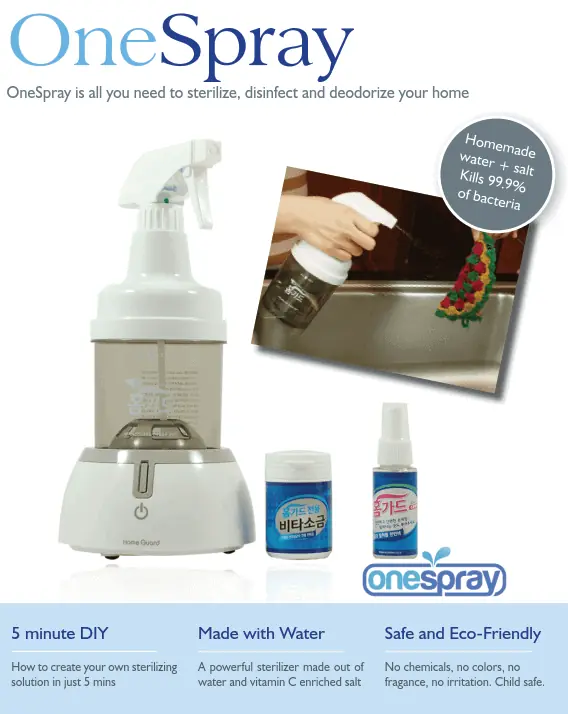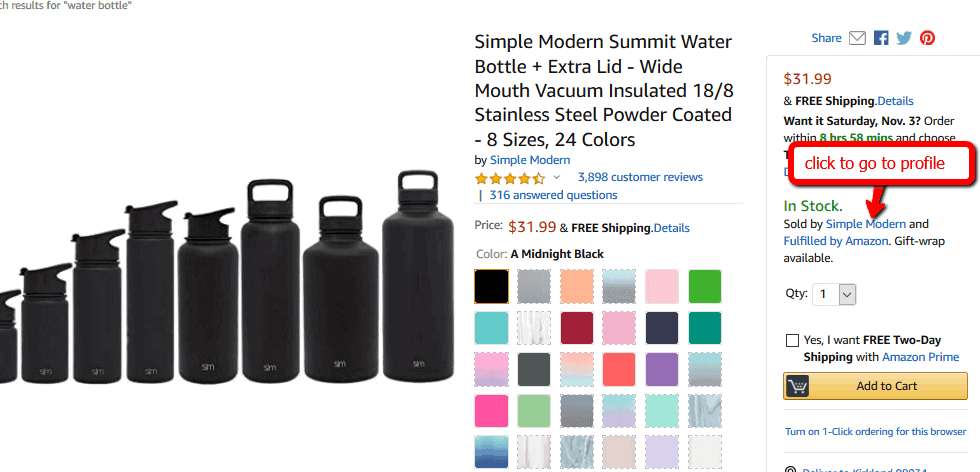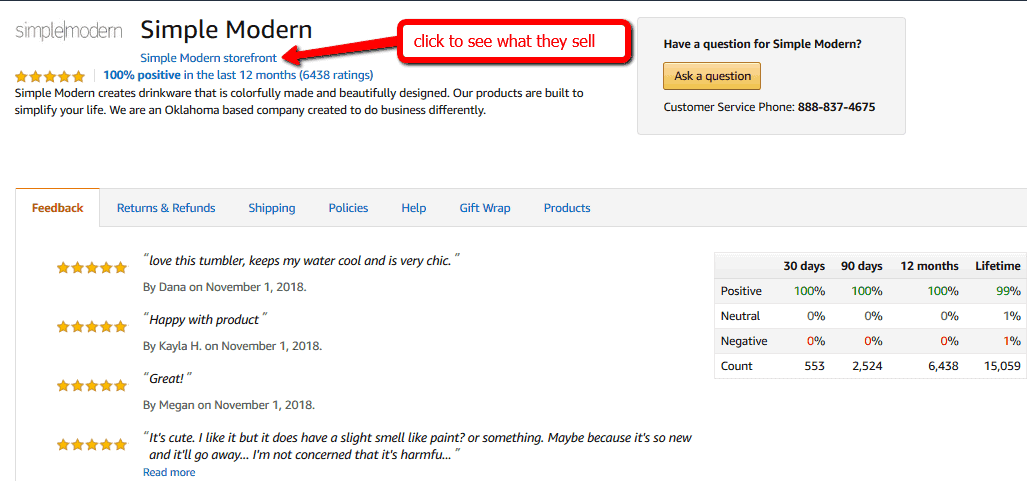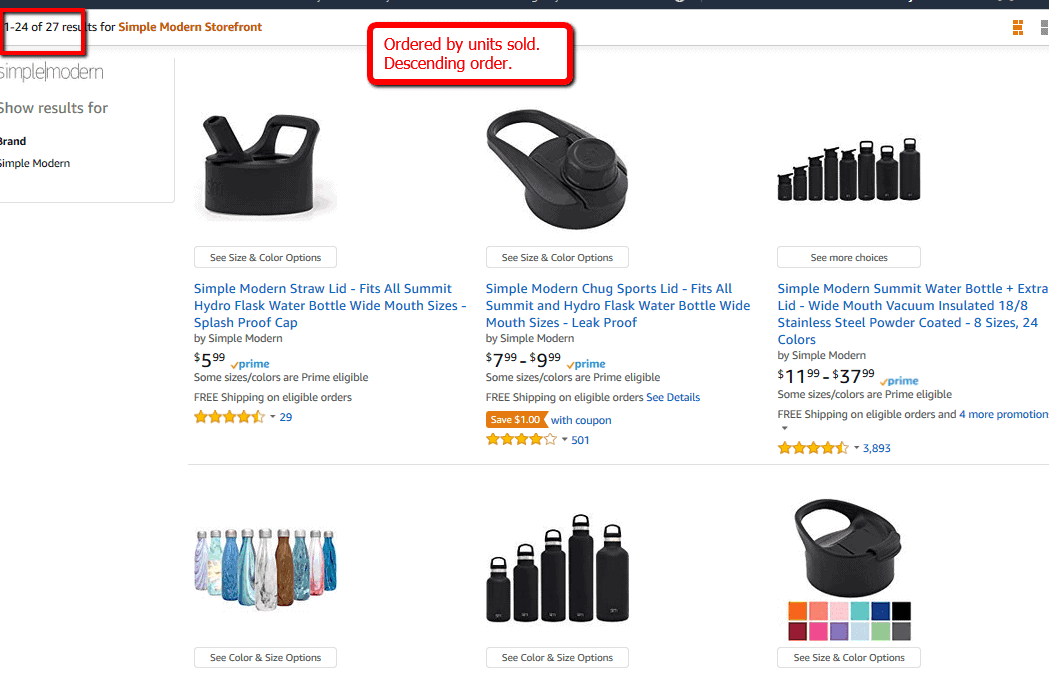Article Summary (TL;DR)
✅ The probability of winning products on Amazon (citing a mentor’s advice) is roughly 1 out of 10 products become successful.
✅ Despite this statistic, advancements in software and data analysis offer opportunities to improve this hit rate.
✅ Personal experiences of product failures turned successes, highlighting the importance of perseverance and finding the right sales channels.
✅ Winning product requirements on Amazon are outlined, including criteria like monthly revenue, units sold, average review rating, conversion rate, PPC ACoS, and gross margins.
Winning Product Probability
A while back, my mentor said that on a good day, 1 out of 10 products will be winners.
A mere 10% hit rate.
This is coming from a person whose family founded a multibillion-dollar retail company across the country. He knows what he is talking about.
When I look at our product portfolio and stats to date, he’s spot on.
However, with the software and data analysis, you can perform nowadays, this stat should be trending up.
When we started sourcing without the help of any data analysis, I shared the story of our first product and how it flopped – a microwavable silicone cutting board.

The second one also flopped – an expensive DIY Greentech product that makes natural household cleaners with just water and salt.

Two in the fail column straight out of the gate.
We were so close to classifying our 3rd and 4th product a failure and throwing in the towel. But as luck would have it, it found the right channel.
#3 and #4 have both turned into our best sellers and have been going strong ever since.
Here’s the tricky part.
Some of our best selling products do over 6 figures in wholesale business.
However, it doesn’t sell well on Amazon.
When the products are sold in stores or direct to consumer at shows, it flies out. On the flipside, some of our best selling items on Amazon does not sell on the wholesale side or in a direct to consumer setting.
Our retail buyers are just not interested.
So depending on the product, what you may deem a failure, could really be a huge success via a different channel.
But since we are talking about Amazon here, allow me narrow down to what I look for when sourcing Amazon products that I define as winners.
🗣️ Pro Tip: What sells well in stores (wholesale or retail) doesn’t necessarily sell well on Amazon!
Winning Product Requirements

Keep in mind that our numbers are totally different to yours. There are different strategies to sell on Amazon. You have to pick your path.
You and I sell in different categories, have different strategies, different visions, and different everything.
Our items are mostly under $20.
If you are selling furniture that sell for hundreds to thousands of dollars, you’re not looking for volume.
If you sell generic items, turnover is most likely your KPI as you have a lot of competition.
These are rough numbers of what makes sense for us in order to label a product a winner.
- $20,000+ in monthly revenue
- 2,000 units sold per month
- Average review rating >= 4.3
- Conversion rate > 20%
- PPC ACoS <= 30%
- Gross margins of 40%
A product rarely hits all 6 points.
Our best seller meets 5 out of 6.
Our number two seller ticks 2 out 6.
Goes to show that there are outliers, but for the most part, our products hit 3-4 out of the 6.
With so much competition, in just about every category nowadays, it’s getting harder and harder to find a product that scores well.
But there’s a quick and easy way to see what’s working for others that you may be ignoring.
That is, looking up best sellers of your competitors.
Analyzing Competitor Storefronts

This is an old tactic, but it’s one of the easiest, most reliable and overlooked.
You can use scouting software, but it’s not 100% and everyone else finds the same thing.
I like to run through my intuition first and then follow it up with software where needed.
To see what I mean, open up “meat claws” or “grill brush”, and sourcing software will say it’s a good opportunity product. But if you look at the listings and the countless number of identical products, you know it’s not worth pursuing.
Here’s what I do.
Let’s say I want to get into the stainless steel water bottle business. I enter “stainless steel bottle” and I want to reverse analyze this seller “Simple Modern”.
1. Click on the “sold by xxxx” to go to their profile page.


2. click on the link to their storefront
3. This will bring up the storefront and Amazon displays the products in order of best sellers (units sold) to least number of units sold.

In this example, what jumps out is that if I was new to this category, instead of diving straight into stainless steel water bottles, which requires a lot of capital and huge competition, it’s a better idea to make some variation of a unique lids that can fit all types of bottles. Make it compatible with all brands.
Rather than investing in stainless steel bottles, going for the lids will be will be cheaper to make, cheaper investment upfront, wider market, and higher demand based on what the storefront is showing.
The stainless steel bottles can still work of course. If you have deep pockets and can afford to reinvest, test the product by hitting PPC hard and doing tons of giveaways.
But an easier backdoor entry point with higher demand seems to be the lids based on this single example.
Caveats

Amazon has made it difficult ever since they combined BSR across variants.
In this example, the #3 listing of the water bottles has 42 variant SKU’s. Instead of ranking each variant separately, all child variants have the best BSR attached to it, even though it isn’t selling at this rate.
This gives a false picture and a trap for new sellers.
If only 2 out of the 42 SKU’s make over $20,000 and the others sell 10 a month, there is no way to find out which version is the best selling one.
Scouting software will tell you that this particular item makes over 6 figures a month, and if you trust it blindly without verifying, a big mistake is waiting to happen.
That’s where more due diligence, intuition and experience comes in.
Nevertheless, the storefronts are fast shortcuts to what each seller’s best selling items are. A great way to track what competitors are doing, and to leverage the work they have already done.
Bonus Tip
You can assign this task to an assistant or a junior employee to track and provide a weekly or monthly report.
A good way to keep your product and idea pipeline fresh and in sync with best selling products.
Comments
Related Posts

10 Profitable Product Categories for Amazon Affiliates 2025
What you’ll learn Amazon is a favorite for experienced and…

Unlock the Secret to a Profitable Automated Amazon Store: How to Build a Hands-Free Income Stream
Ever dreamed of running a profitable Amazon business while sipping…

Master Amazon New Restricted Keywords: A Seller’s Guide to Success
Changes to Amazon’s restricted keywords list have taken a lot…





Leave a Reply